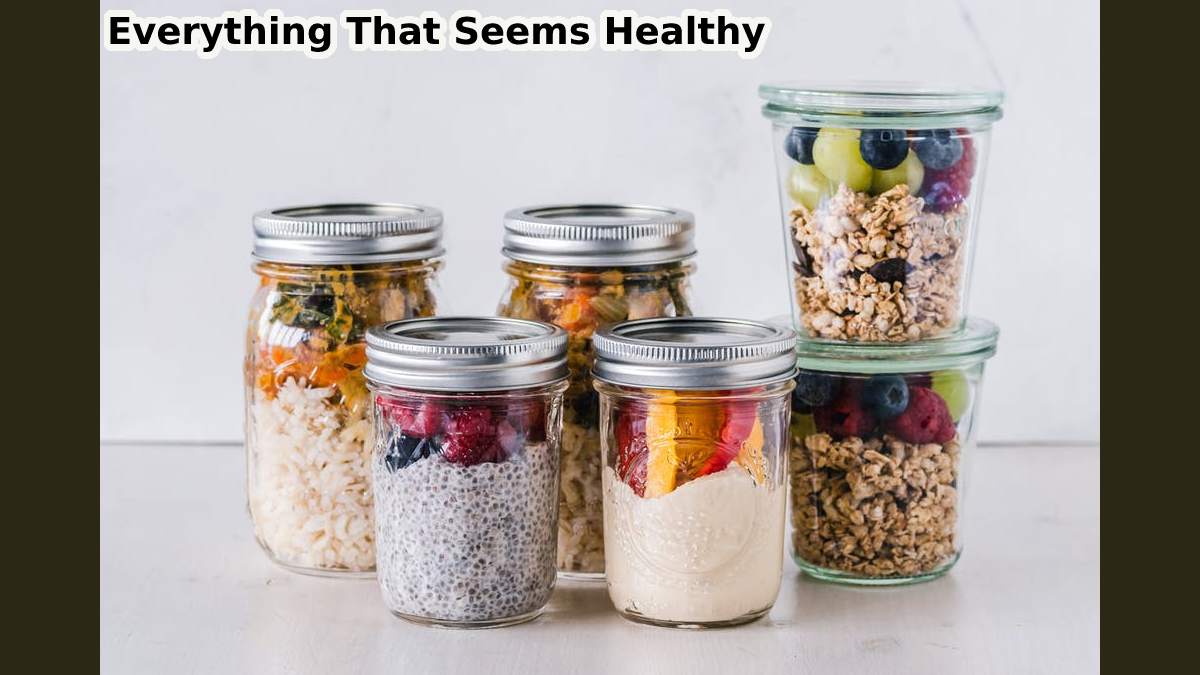Everything That Seems Healthy, Really Is? – Healthy, organically grown, whole grain, palm oil free, high fiber content, gluten free, with stevia… these are some of the phrases that we can find in many of the products that flood the shelves of supermarket aisles. Brands know that this sells and we, on many occasions, let ourselves be influenced by the colors and the “truth” of those phrases, but here comes the big question:
Table of Contents
WHENEVER I EAT SOMETHING HEALTHY, IS IT GOOD FOR ME?
This is more common than you think and it is very easy to make certain mistakes when we want to turn our lifestyle upside down and turn it into something more “healthy” . We are extremists by nature and if we start running, we run marathons, if we start eating well, we eat everything whole (although we don’t read the ingredients)… well, not so much or so bald. Obviously there are many tips and tricks that we can carry out to improve the quality of our diet , but not all of them involve eating everything that is recommended to us every day of the year and almost at the same time.
If, as in the example, you consume avocados, EVOO and cashews in your breakfast, you will probably have exceeded 20% of the recommended daily amount of fat and therefore when you eat the rest of the meals you will exceed that percentage and instead of improving your composition body, you will see how it gets worse, despite how hard you are trying. Watch out.
5 KEYS TO MAKE YOUR DIET REALLY HEALTHY
1. Calculate well the amount of carbohydrates, fats and proteins that you consume.
Calculate well the amount of carbohydrates, fats and proteins that you consume. Keep in mind that the ideal in terms of macronutrients is to consume around 20% fat, 60% carbohydrates and 20% protein, daily.
2. Fats must be provided by natural products
Fats must be provided by natural products and it is important not to consume manufactured products such as industrial pastries or refined cereals. Oily fish, avocado and nuts are a great option, but remember, always in moderation and without basing our diet on them, but rather as one more food that completes our diet.
3. Moderation despite the benefits of the product itself.
Moderation despite the benefits of the product itself. As much as a product is of great quality, you must consume it responsibly, taking into account the distribution of nutrients that we have mentioned in the point.
4. Read food labels carefully .
Read food labels carefully If it does not indicate that the flours used are of integral origin but in the slogan of the box if that word appears, stop and observe the order of each food. The ingredients appear in a logical order, that is, the first is the one that contributes the most and the last is the one that contributes the least. If whole wheat flour is in eighth position, you should know that the manufacturer is not deceiving you by saying that it contains whole wheat flour, but the amount is really insignificant and probably responds to a commercial strategy.
5. Avoid processed and ultra-processed foods .
Avoid processed and ultra-processed foods Normally when a product has more than 3-4 ingredients it means that it will almost certainly be a processed product.


